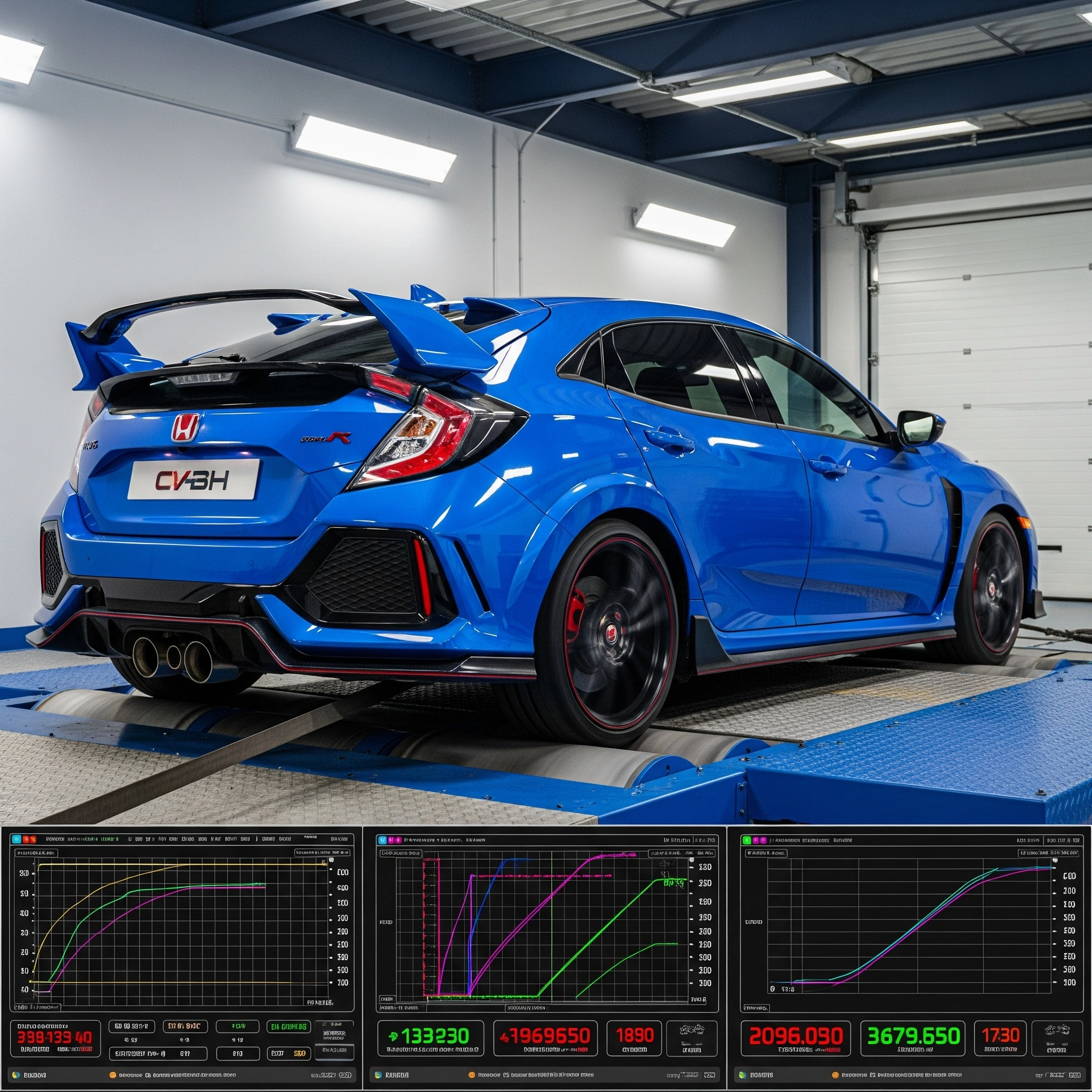Introduction
ECU tuning responsiveness plays a crucial role in enhancing your vehicle’s performance. Whether you’re seeking sharper throttle control or quicker power delivery, modifying your ECU can unlock significant improvements without hardware changes.
What Is Vehicle Responsiveness?
Before understanding how ECU tuning affects responsiveness, it’s essential to clarify what this term entails in automotive performance:
Throttle Response: The speed and precision with which the engine reacts to accelerator input.
Turbo Lag Reduction: Minimizing the delay between throttle application and boost response in turbocharged engines.
Power Delivery: Smoothness and consistency of torque across the RPM band.
Transmission Response: How quickly and intuitively the transmission adapts to dynamic driving conditions.
Overall Drivability: The cumulative result of the above systems working in sync.
From the factory, ECUs are calibrated conservatively to comply with regulatory requirements and ensure long-term reliability across various fuel qualities and climates. While practical, these settings often limit a vehicle’s responsiveness.
How ECU Tuning Enhances Vehicle Responsiveness
1. Throttle Mapping Optimization
Modern drive-by-wire systems translate pedal input into electronic signals interpreted by the ECU. Stock throttle maps often soften response for everyday usability.
What tuning improves:
Eliminates “dead zones” in pedal travel.
Enables linear or sportier throttle maps.
Customizes sensitivity for different drive modes.
Result: A more intuitive and immediate connection between your foot and the engine.
2. Ignition Timing Adjustment
Ignition timing governs when the spark plug fires relative to piston position. Factory settings are cautious to avoid engine knock.
Tuning adjustments can:
Advance timing within safe margins.
Improve torque output, particularly in the mid-range.
Sharpen throttle response and combustion efficiency.
Modern ECUs use knock sensors to allow real-time tuning adjustments for optimal timing under safe conditions.
3. Fuel Delivery Optimization
Fuel-air mixture plays a critical role in engine behavior, particularly during rapid throttle changes.
A performance tune can:
Adjust air-fuel ratios for ideal combustion.
Improve transient fueling for faster throttle reaction.
Enhance torque delivery throughout the rev range.
Properly tuned fuel delivery reduces hesitation, especially during aggressive acceleration or load transitions.
4. Turbocharger and Supercharger Management
Forced induction systems benefit greatly from ECU tuning, which refines how boost is generated and delivered.
Benefits include:
Earlier and faster boost build-up.
Reduced turbo lag.
Dynamic overboost strategies for short bursts of extra power.
Improved boost control over the RPM range.
This tuning transforms lag-prone engines into highly responsive systems that react precisely to throttle input.
5. Rev Limiter and Redline Adjustments
Rev limiters are typically conservative from the factory. When safely increased, they can unlock higher RPM performance.
Tuning allows:
Higher redline access (within mechanical limits).
Progressive rather than abrupt rev limiting.
Smoother power delivery at high RPMs.
This is especially beneficial during spirited driving and on racetracks, where every RPM counts.
6. Torque Management Modifications
OEM torque management reduces engine output under certain conditions to protect the drivetrain or improve stability. However, these restrictions can dull responsiveness.
Tuning can recalibrate:
Gear-specific torque limits.
Throttle intervention during shifts.
Traction/stability control thresholds.
The result is a more direct connection between driver inputs and vehicle performance—while maintaining safety when needed.
Real-World Benefits of Enhanced Responsiveness
Daily Driving Improvements
Safer Overtaking: Instant power reduces hesitation.
Merging Confidence: Responsive throttle aids in gap timing.
Fuel Efficiency: Better low-end torque reduces the need for frequent downshifting.
Engagement: A more connected driving experience.
Performance Driving Advantages
Corner Exits: Immediate power application aids acceleration.
Driver Control: Precision throttle enables mid-corner balance adjustments.
Consistency: Tuning maintains performance under varying temperatures and loads.
Important Considerations Before ECU Tuning
1. Reliability and Engine Longevity
Not all tunes are created equal. Aggressive, poorly developed tunes can reduce engine life or stress components. Always:
Use reputable tuners.
Ensure the tune is compatible with your vehicle’s hardware.
Monitor temperatures and boost pressures post-tune.
2. Warranty Implications
Factory warranties typically do not cover ECU modifications. Consider:
Using reversible tuning options.
Waiting until post-warranty.
Dealer-approved tuning services (if available).
3. Fuel Requirements
Many tunes require higher-octane fuel to safely support advanced timing and boost levels. Ensure availability and factor in long-term cost.
4. Emissions Compliance
Certain ECU modifications may violate local emissions regulations. Confirm legality before tuning, especially if annual inspections are required.
ECU Tuning Options
Off-the-Shelf (OTS) Tunes
Designed for specific vehicles and modifications.
Cost-effective and plug-and-play.
Less personalized but thoroughly tested.
Custom Dyno Tuning
Tailored to your car’s exact configuration.
Offers maximum performance and reliability.
Requires professional tuning equipment and expertise.
Flash vs. Piggyback Systems
Flash Tuning: Alters the factory ECU directly.
Piggyback Units: Modify sensor signals without rewriting ECU code.
Choose based on vehicle compatibility, budget, and performance goals.
Conclusion: Is ECU Tuning Right for You?
ECU tuning is one of the most efficient upgrades you can perform to enhance vehicle responsiveness. From faster throttle reaction to smoother power delivery and better turbo behavior, a good tune can make your car feel sharper, more agile, and more enjoyable to drive.
However, responsible tuning means balancing performance with safety and compliance. Partner with experienced tuners, understand the implications for fuel, warranty, and legality—and most importantly, tune with purpose.
A well-calibrated ECU doesn’t just boost numbers—it transforms the relationship between you and your machine.


